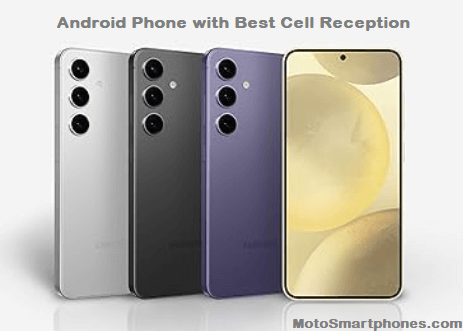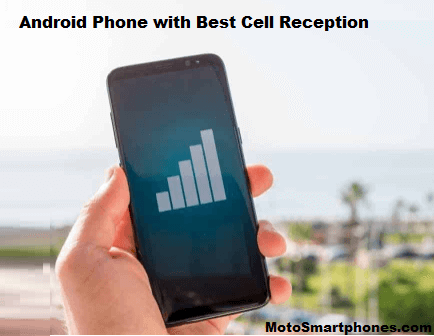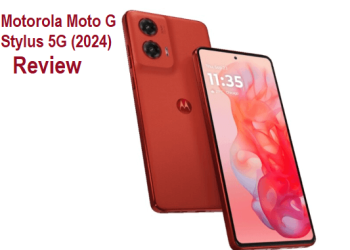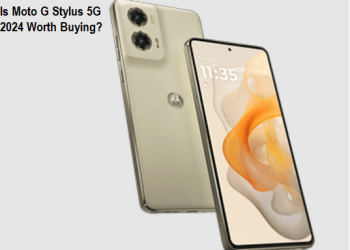Some Android phones have better antennas than others; others can pick up a stronger signal in troubled areas. However, knowing which Android phone has the best signal strength can be difficult. But stop crying. I’ve done everything for you. Check out the list I made for you.
Top Android Phone with Best Cell Reception in 2024
1. Samsung Galaxy S24

The Samsung Galaxy S24 is the best-ever phone released in 2024 with cell reception, antenna performance, and AI features. The Galaxy S24 uses a new antenna design with improved materials, potentially providing better signal reception in weak coverage areas.
The new Samsung Galaxy S24 phone has a 6.2-inch touchscreen display (FHD+) with a 120Hz refresh rate. The display uses Gorilla Glass for protection. A Snapdragon 8 Gen 3 octa-core processor powers the Samsung Galaxy S24.
It comes with 8GB RAM and a 256GB upgrade option. Samsung Galaxy S24 runs Android 14 and is powered by a 4000mAh non-removable battery. Samsung Galaxy S24 supports wireless charging and exclusive fast charging.
Samsung Galaxy S24 is a dual SIM (GSM and GSM) mobile device that can use nano-SIM and nano-SIM cards. Connectivity options on the Samsung Galaxy S24 include Wi-Fi 802.11 axe, GPS, Bluetooth v5.30, NFC, USB Type-C, Wi-Fi Direct, 3G, 4G, and 5G.
The Galaxy S24 is rolling out new AI technologies. Samsung announced Galaxy AI, which it describes as an AI experience for phones. Galaxy AI allows real-time audio and text translation between languages in native phone apps.
Samsung Galaxy S24 supports more cellular frequencies, including new 5G bands, improving reception where specific frequencies are available.
The Galaxy S24 is available from US carriers, including Verizon, AT&T, T-Mobile, Sprint, and US Cellular regional carriers, making it the best network-strength phone in 2024.
2. Samsung Galaxy S22 series
![]()
One of the innovations in the S22 series is the improved antenna, which has shown fantastic results so far. The Galaxy S22 series is excellent in areas with weak signals, average in regions with strong signals, and has superior data speeds.
The main features of the X65 modem are an AI signal boost and an improved signal tracker. This means that the S22 model will find a way to make the most of the situation whenever signal reception is low. This corresponds to signals below 120 dBm, rare in cities and towns but frequent in rural areas. So, if you travel by car often or live in a remote area, the S22 is your phone.
On the other hand, the Galaxy S22 is better regarding solid signal strength. It’s not perfect, but it’s good. The new S22 series is not much different from some older models, including products from other manufacturers.
Some users complained about sudden signal loss in previous models, and while the S22 series has addressed this issue to some extent with its new modems, this rarely happens.
Regarding data download speeds, the S22 is way ahead of the S21 series and, thus, ahead of most phones on the market. Depending on your carrier, download speeds can be nearly three times faster than previous models.
3. Motorola One Vision

The Motorola One Vision offers all the essential features of a phone with excellent quality, a fantastic price, and impressive antenna technology. It can pick up signals where other phones can’t, which is a big help if you want to stay connected in rural or remote areas.
Motorola One Vision has Full HD that looks great on a 6.3-inch screen. The good thing about the net is that it doesn’t have a notch, but there is a small hole for a selfie camera in the upper left corner. The screen format is 21:9, narrower than standard phones, making it easier to handle with one hand.
The camera is far better than its price indicates and is excellent in landscape, macro, and portrait. I have a bit of trouble taking great pictures in low light conditions, but in general, I always get great photos. And it can match the best experts in the dark sometimes.
One Vision’s SAR values indicate excellent antenna quality, positively impacting battery life and performance. The user interface is almost pure Android as it is an Android 1 phone, meaning fast navigation speed.
The Motorola One Vision is currently one of the best smartphones with the best antenna for the price and offers excellent value for money as of 2024.
4. Google Pixel 7 5G
![]()
With the launch of the Pixel 7 phone, Google has made a significant upgrade when it comes to signal reception. This is because there were many signal reception problems in the previous (Pixel 6) series.
The first tests showed that an Android carrier service update was causing the problem. As a temporary solution, some users reported turning off 5G; others said clearing the Carrier Services app cache and restoring the original version. Others may have resolved the issue by signing up for the Carrier Services beta program.
The new Pixel 7 series is expected to bring many upgrades, including the new Tensor 2 chipset, so the issue will likely be quickly resolved. In any case, Pixel phones have solid signal strength no matter where you are and are worth buying.
5. Sony Xperia XZ3

Sony has always delivered when it comes to quality, but it took time to adopt a popular and excellent design. The Sony Xperia XZ3 is among the USA’s most incredible, best-looking, high-end antenna phone obstacles. It also performs excellently in all functions.
The Sony Xperia XZ3 has nicely built-in glass on the front and back, while the Gorilla Glass Five, with an aluminium frame, holds everything together. Besides the excellent design, it is also water and dust-resistant. The screen is simply stunning. It might be the best screen on a phone, better than the iPhone 10 XS Max and Samsung Galaxy Note 9 screens. Colour, sharpness, brightness, and detail are all excellent.
Sony is also known for its camera features. Surprisingly, there is no dual camera on the back of the phone, just a single camera. However, it uses software to take photos with better bokeh than most dual-camera phones. Pictures, in general, are top-notch for this phone in all kinds of environments.
As for video, you can record video in 4K. This is common on all high-end phones. What’s out of the ordinary is that it can record super slow motion video at 960 frames per second in Full HD 1080 pixels. Only this and a few other Sony phones can do that. Other phones can only handle super slow motion in HD 720 pixels.
The phone’s user interface is straightforward and built with some of Sony’s technologies, making it a high-speed and easy-to-use user interface. So, if you are looking for a phone with the best possible signal, the Xperia XZ3 has the best antenna.
6. Huawei P30

The Huawei P30 has an antenna designed to pick up the weakest signals. Huawei’s P30 has been shown to outperform other phones in signal strength tests. Not only does this mean you’re less likely to drop calls, but you’ll also have a better connection in areas where other phones struggle.
The P30 is also one of the last Huawei flagship devices to support Google services and its big brother, the P30 Pro. The slim, compact, lightweight phone feels great and is comfortable for extended periods. Thanks to the AMOLED display, the display is bright and has punchy colours.
It supports face unlock and an in-display fingerprint sensor. Fingerprints are also fast and accurate, with a one-second delay in opening the device. The device has a headphone jack, the most crucial smartphone feature.
The P30 is known as a camera phone, and its camera output never disappoints. The primary camera is co-designed by Leica and powered by AI technology. The device’s camera produces excellent photos, almost like a digital camera. There are many modes to choose from, but the performance is good with automatic settings. The images captured by this device are vivid and detailed.
Regarding performance, the unit does an excellent job of day-to-day tasks without lag issues and stall seeks. Gaming performance is solid regardless of settings. However, this 2-year-old device is still one of the fastest devices compared to other flagship smartphones today.
One of the most essential features of a mobile phone is the antenna. If you’re looking for a phone that fits your needs and stays connected even in harsh conditions, the Huawei P30 is what you need.
7. Samsung Galaxy A50

The new Galaxy A-series is an excellent line of mid-range and high-end phones with significant price tags in most cases, especially in the USA. The most exciting phone in the series is the A50. It’s a remarkable comeback for Samsung in the low-end and mid-end segments.
The most surprising thing about the A50 is its display and antenna. Affordable phones like the Samsung Galaxy A50 don’t usually have such a great display (6.4-inch Super AMOLED with Full HD+ resolution) and an antenna. Unlike phones with a single antenna, the Galaxy A50 uses a multi-antenna system to pick up even the weakest signals.
A feature no one mentions is the antenna quality. It is several times better than the iPhone and other expensive phones and much better than, for example, most Xiaomi and Oppo phones. The Samsung Galaxy A50 has a sound value of 0.27. It negatively affects antenna quality, performance, and battery life when acoustic values are high and poor.
This A50 can’t compete with the best camera phones. But it’s still a relatively good camera we look for in a phone. Triple camera with 25 x 8 x 5 megapixels, 1.7 aperture, wide angle, and face detection autofocus. Finding a wide angle on a phone like this is very friendly and rare.
The Samsung Galaxy A50 is an excellent phone for gaming thanks to its large and lovely display; it handles most games without fuss and will take even the most graphically demanding ones. The sound is average, but most of the time, I play without sound or with a headset on. The battery is impressive at 4,000 milliamp-hours.
The 4,000mAh battery easily lasts for two days. There is a 15-watt charger in the box. I’ve seen more powerful phone chargers at this price level, but it’s a decent capacity. It takes about 1 hour and 25 minutes to charge the phone from 0 to 100%.
The phone you are looking for is an affordable price combined with a great display, antenna quality, battery life, camera performance, user-friendliness, and gaming.
8. Samsung Galaxy S20 FE

For European users, the Samsung S20 FE is one of those great devices that can be considered valuable for our money. It has been almost two years since this device has been on the market. However, today, it is still one of the best options to consider regarding Android phones with the best cell reception in 2024.
It’s not the most powerful chipset but it can still deliver top-notch performance. And there is a plus point that the S20 FE’s modem is designed to be more efficient. It also helps improve signal reception. The device has a Super AMOLED screen with a 120Hz screen refresh rate. The viewing experience is excellent, and navigation and scrolling are fast and smooth.
The device is IP68-rated and protected against dust and splash water. It also has in-display fingerprints and loud, clear dual stereo speakers. The device has micro SD card storage, which is rare in modern devices. The s20 FE is also paired with a nice and helpful camera. The primary camera has an excellent dynamic range.
The photos taken with this device are fantastic, even though the wide-angle and telephoto lenses are beneficial. It supports video recording up to 4k; the output is perfect for front and rear cameras.
The device has a battery capacity of 4,500 milliamps, enough to last a day. The only catch is that it only supports charging up to 25W.
Overall, this smartphone is a great choice. It has a flagship, powerful antenna, fast performance, great features, and an excellent camera.
9. Samsung Galaxy Note 10+

Samsung’s Note series has always given us a true flagship from the Korean phone company. They are stuffed with the latest and most robust hardware and software and are generally excellent phones. The 6.8-inch Dynamic AMOLED 2K resolution HDR10+ display with Gorilla Glass 6 on the front and back is truly stunning. The Note 10+’s display is the best I’ve seen until the next Samsung S24 comes out.
One of the most valuable things about the Note 10+ is the best antenna quality of any top phone I’ve tested. Its SAR value is more than 5x lower than the iPhone’s and significantly lower than any other direct competitor.
The improved antenna performance is due to the use of adaptive array technology. This allows the phone to adjust the antenna pattern to optimize reception dynamically. The Note 10+ has unique camera settings. There are three cameras on the back and a time-of-flight camera for bulky effects for photos and videos.
There are also very stable features for really effective videos. Note that 10+ battery production is confident enough to put a 4300 milliamp-hour battery in the phone. The battery easily lasts for two days. A full day’s battery can be recharged in just 30 minutes.
Another feature is that you can now zoom and swipe the phone display while holding the pen in the air. But you can’t always do that. The phone does not have a headphone jack. It only has USB-C, but I have an AKG headset in the box with this connection. I hoped for more optical zoom than the 2x optical zoom found on phones.
A fingerprint scanner might be faster. The power button placement on the left side is annoying, at least initially. Overall, the Samsung Galaxy Note 10+ is one of the most influential and feature-rich smartphones on the market with the best antenna.
10. Samsung Galaxy S9+

The Samsung Galaxy S9+ has a series of advanced antennas designed to provide reliable signal reception in various situations. While other phones rely on a single antenna to transmit and receive signals, the Galaxy S9+ uses multiple antennas to optimize signal strength and minimize dropped calls and data interruptions.
The Galaxy S9+ also features advanced signal processing technology that helps increase signal strength in areas with poor reception. On the other hand, the Samsung Galaxy S9+ has a 6.2-inch 1440p Super AMOLED display made with Corning Gorilla Glass 5. It is IP68-certified water and dust-resistant and can withstand up to 30 minutes in 1.5 meters of water.
Dual or single SIM options are available for nano SIM cards and micro SD cards. On the back are two camera setups: a 12-megapixel wide-angle camera and a 12-megapixel telephoto camera for detailed close-up photos. It also has a more convenient location for a heart rate sensor and a fingerprint scanner on the front.
The 8-megapixel wide-angle selfie camera, a 2-megapixel iris camera, LED lights, and primary sensor are on the top of the device. If you’re looking for a phone with a better signal, the Samsung Galaxy S9 has the best antenna.
Conclusion
Poor antenna quality means poor connection to the mobile network and poor mobile coverage when using the phone, not only in rural areas with long distances between cell towers but also in cities with concrete buildings and green windows everywhere.
Poor antenna quality means your phone has to use more power to stay connected to the mobile network. Using more power means using more battery, and using more battery means the phone stops working at a faster rate.
Frequently Asked Questions
Which Android phone has the best cell reception in a weak signal area?
Android devices tend to work better in areas with weak signals. The Samsung S24 series is currently considered the best Android phone for staying connected in areas with poor coverage. However, without up-to-date analysis, it is impossible to determine which phone works best in a room with a poor signal.
Why don’t all mobile phones provide the same signal reception?
Not all phones offer the same signal reception as manufacturers prioritize other aspects such as performance, aesthetics, or cost. Reception quality depends on the antenna, radio, and other components used in the phone and the signal environment.
Do 5G Phones Get Better Reception?
5G phones can experience better reception in areas where 5G is available due to new technologies and frequencies offering faster speeds, lower latency, and greater capacity. Also, the advanced technology may make better reception possible in the 4G/LTE area.
Do newer phones offer better reception?
Generally, newer phones have better reception compared to older models. It is designed to take advantage of the broader spectrum as new cellular frequencies become available. Modern smartphones can access multiple networks, such as 4G, LTE, and 5G, to capture more robust and faster signals.
Using state-of-the-art technology, these devices can maintain a stable signal in more locations and for more extended periods than older phones.







